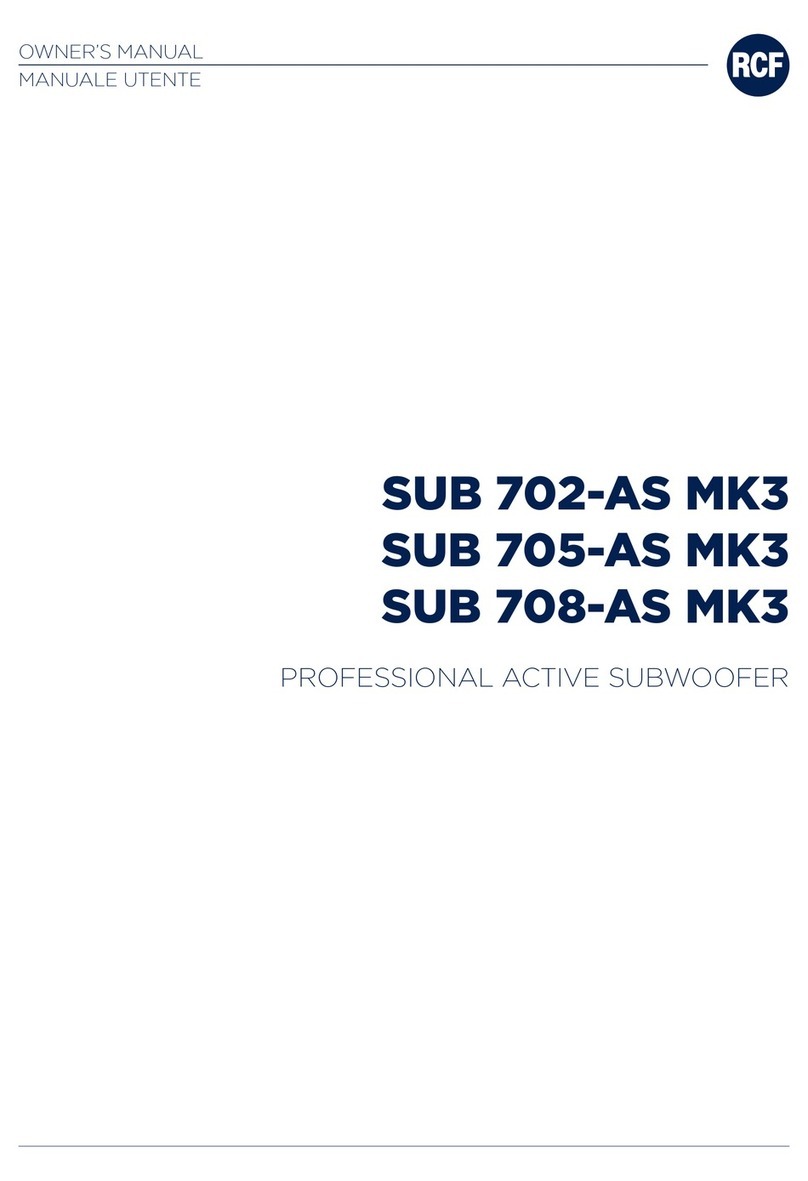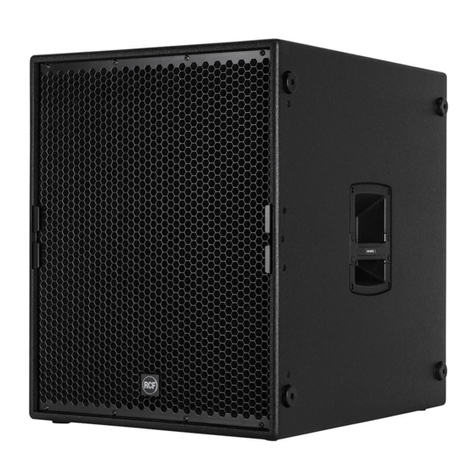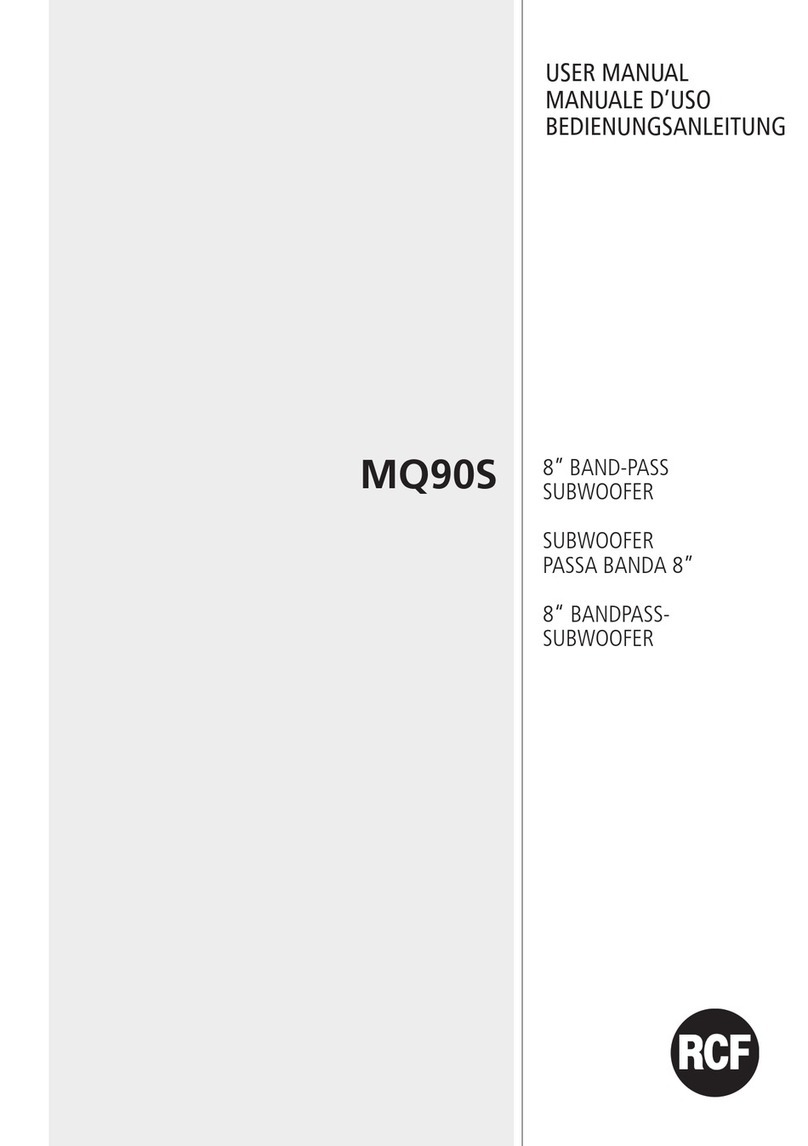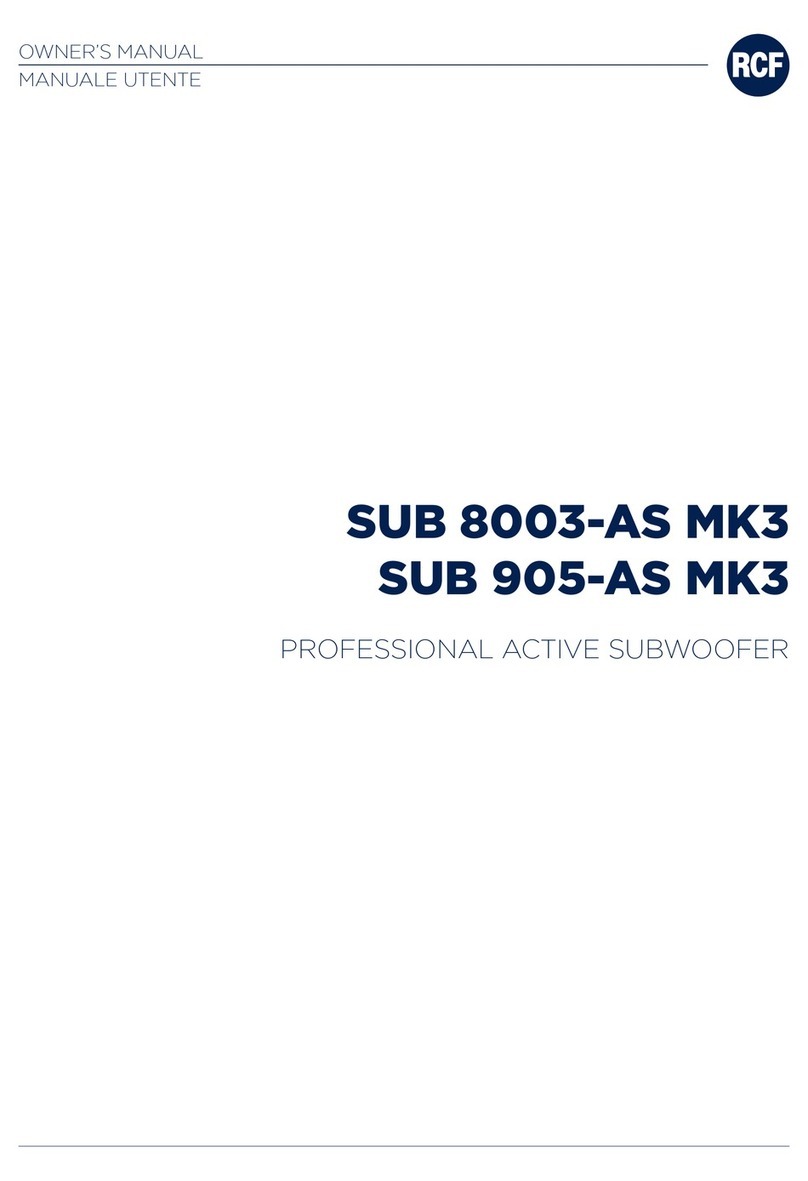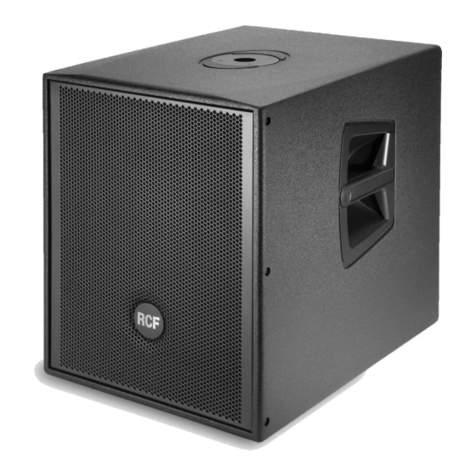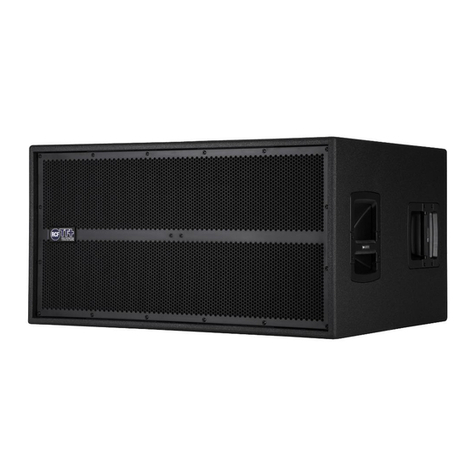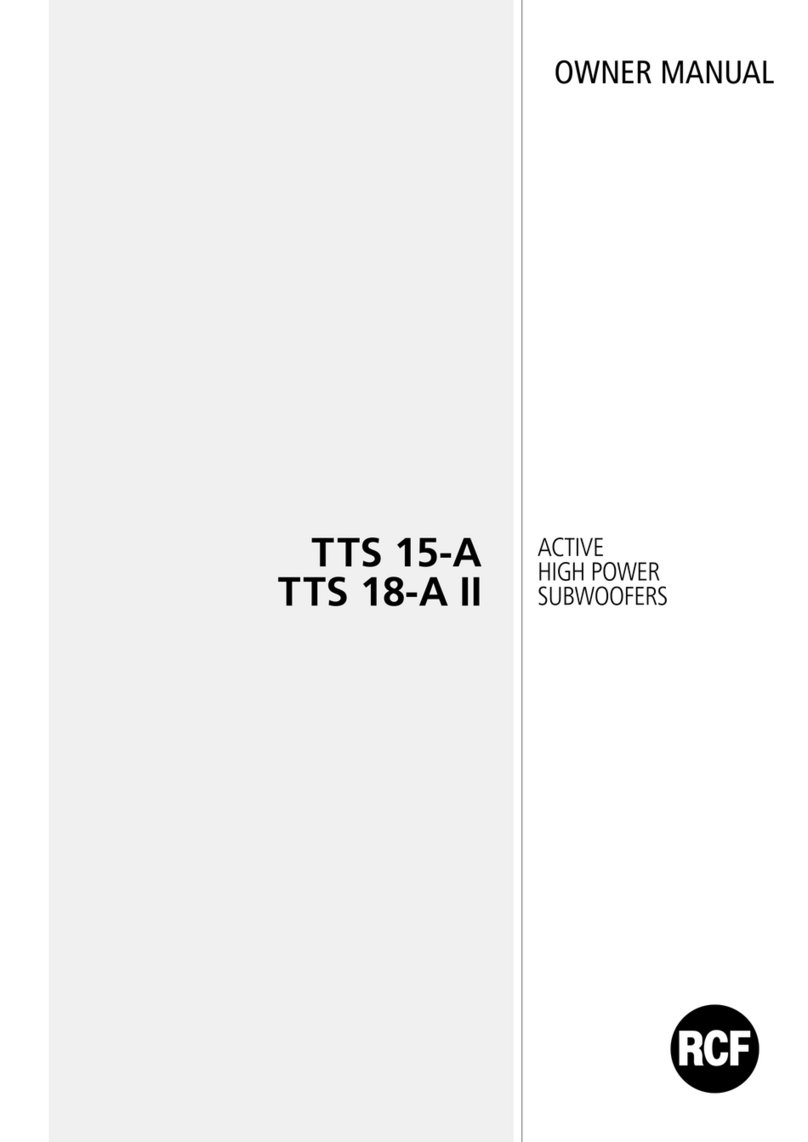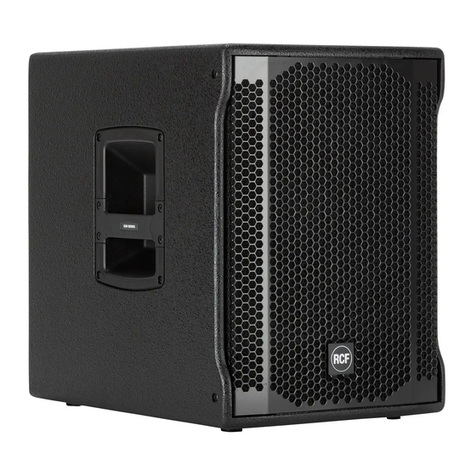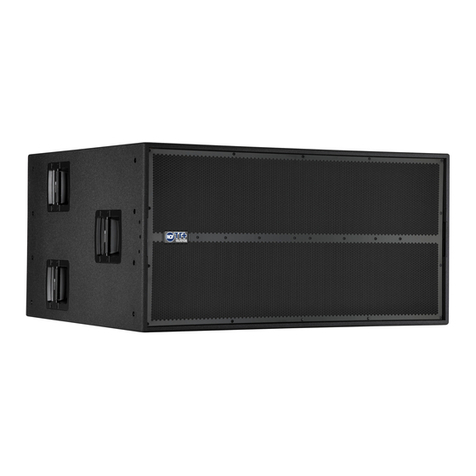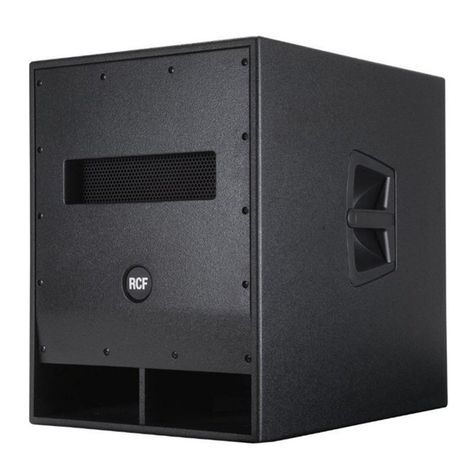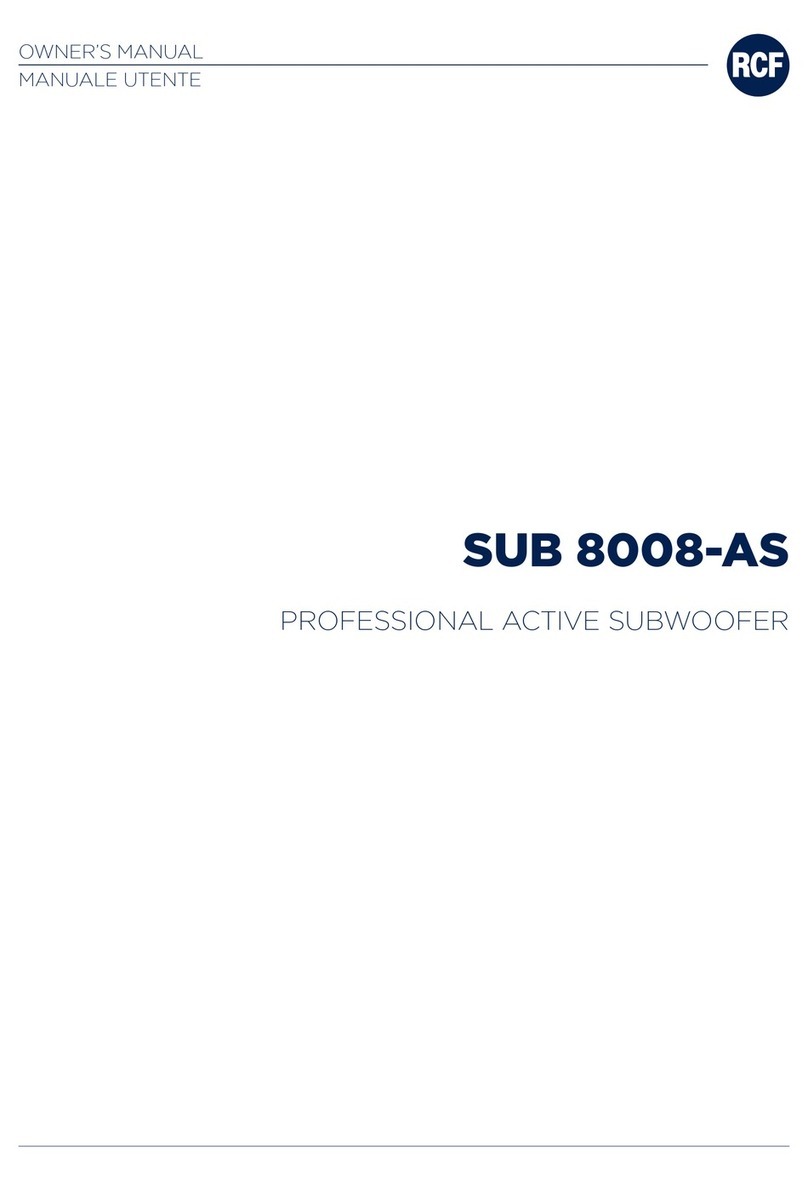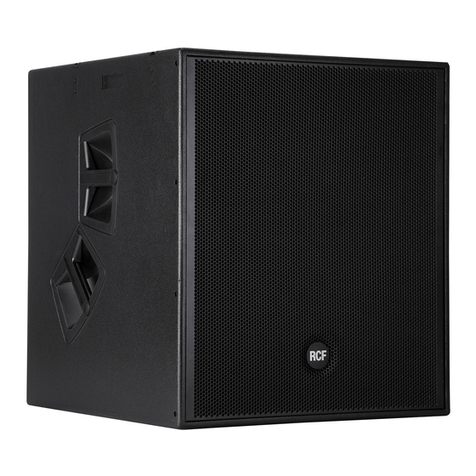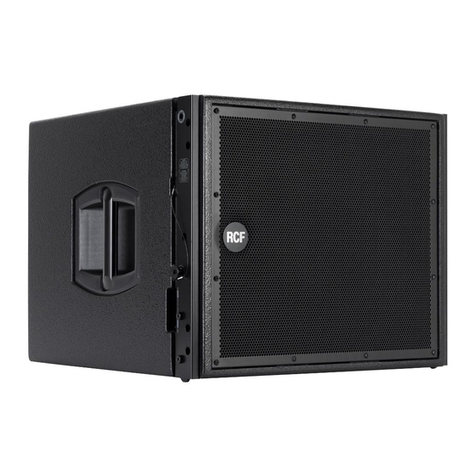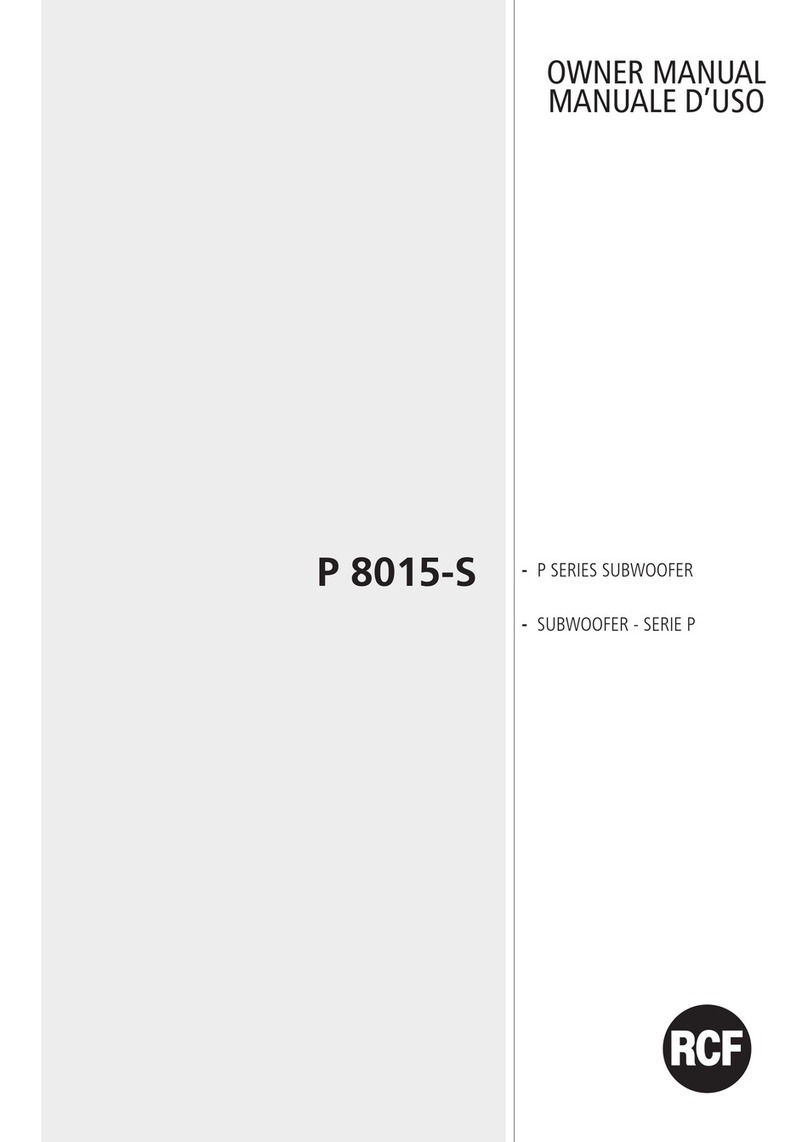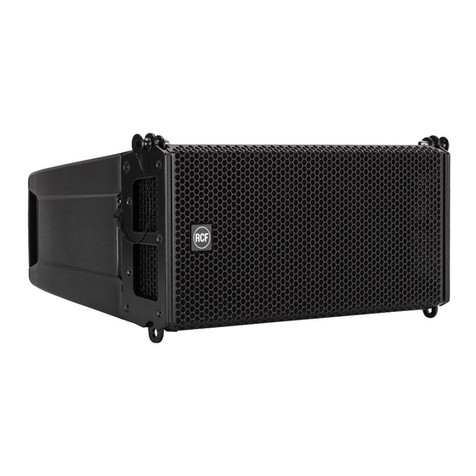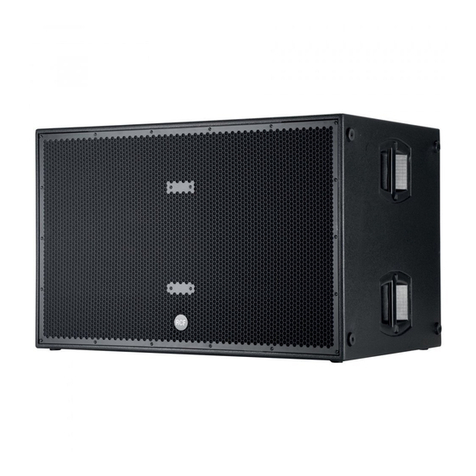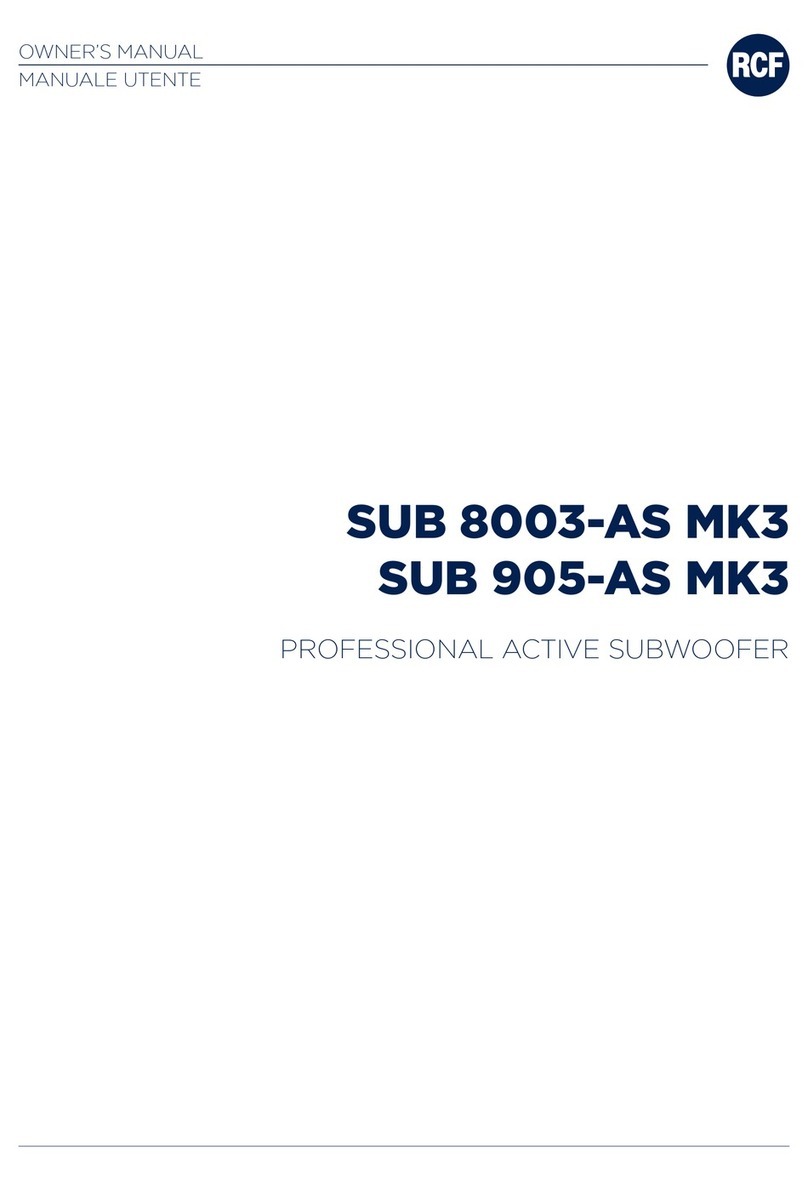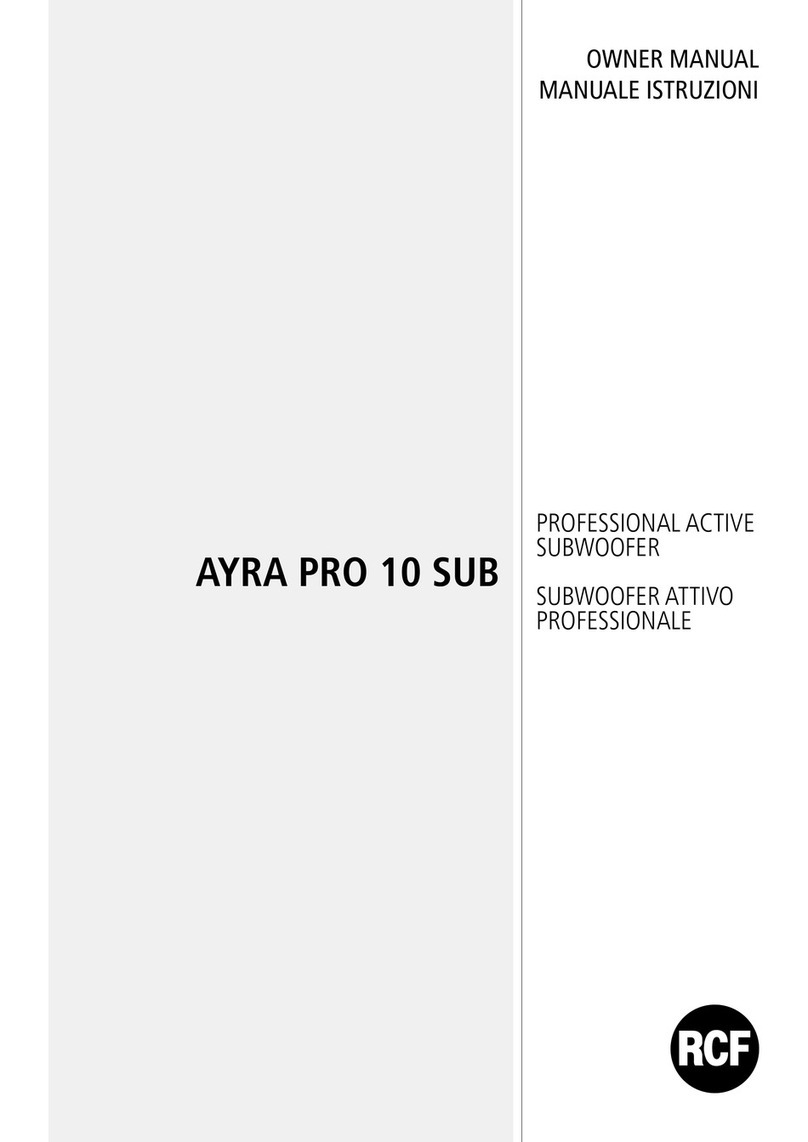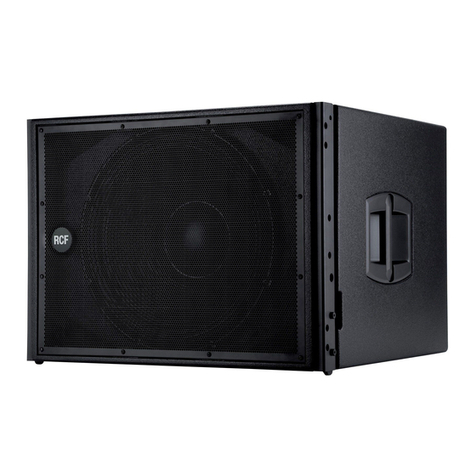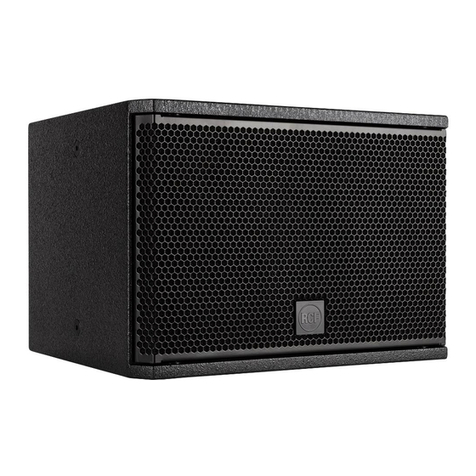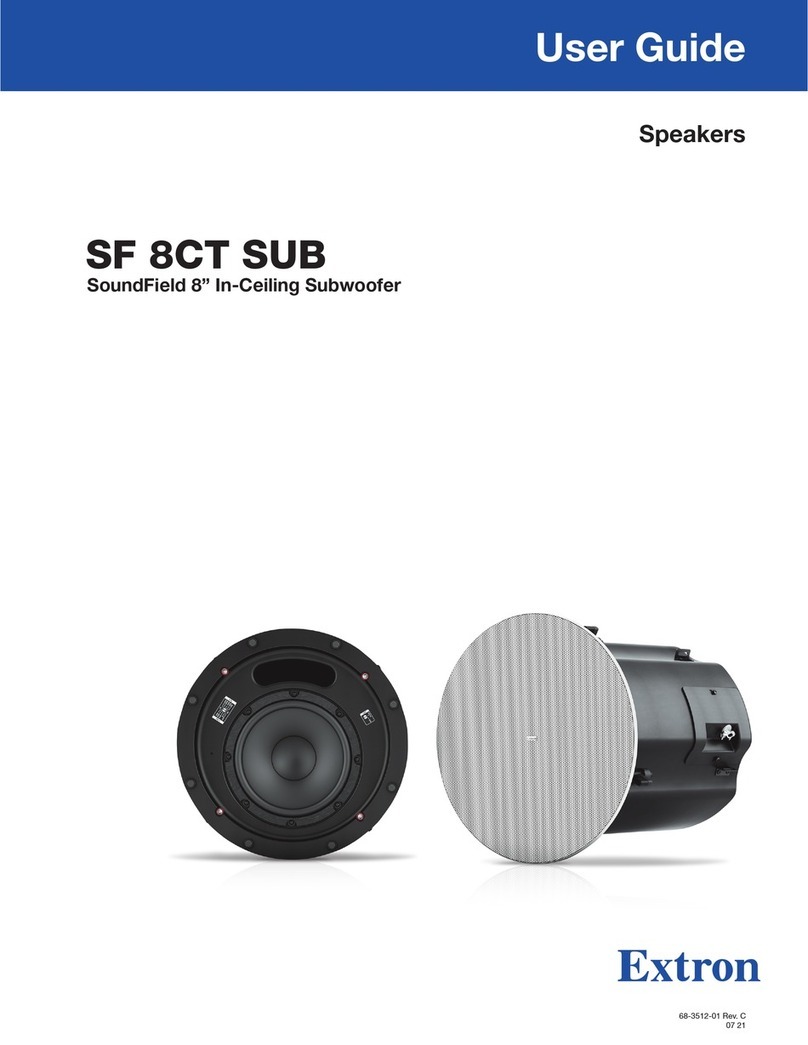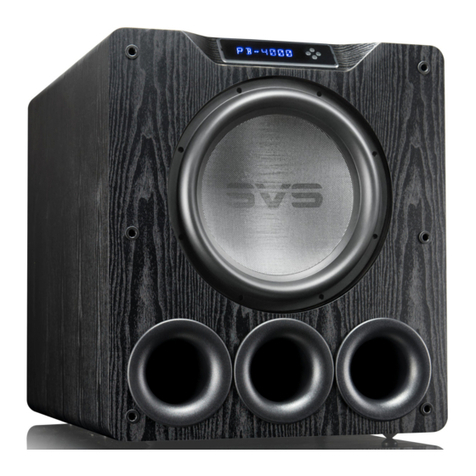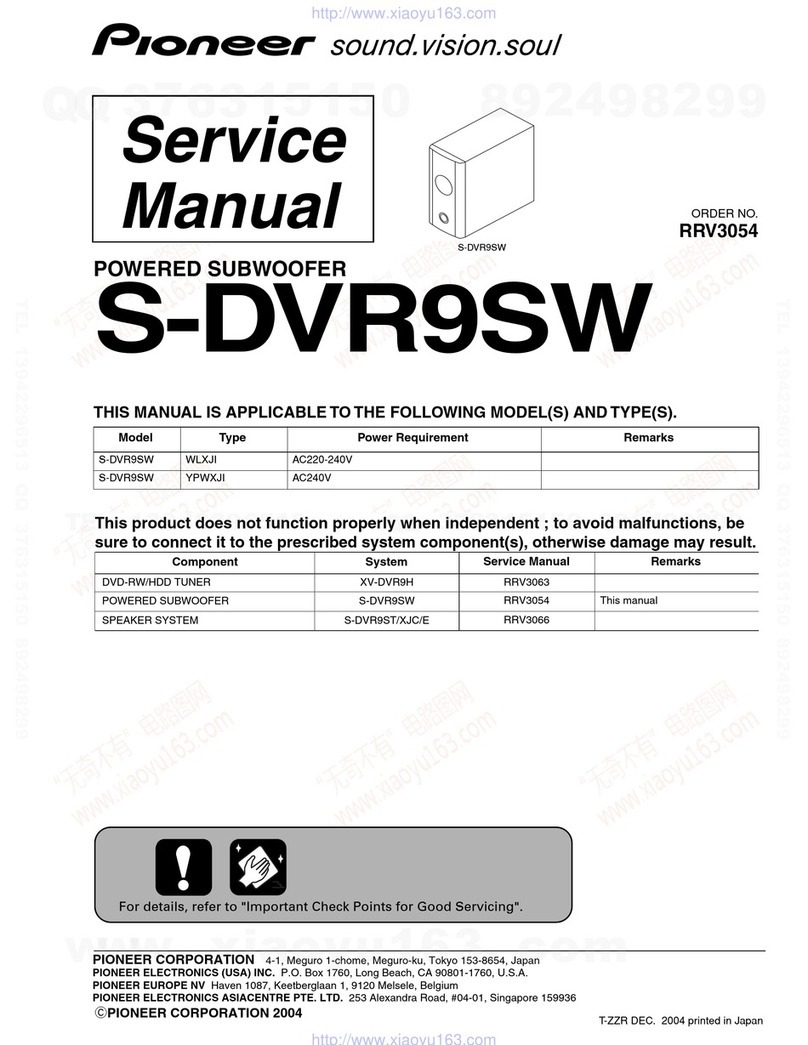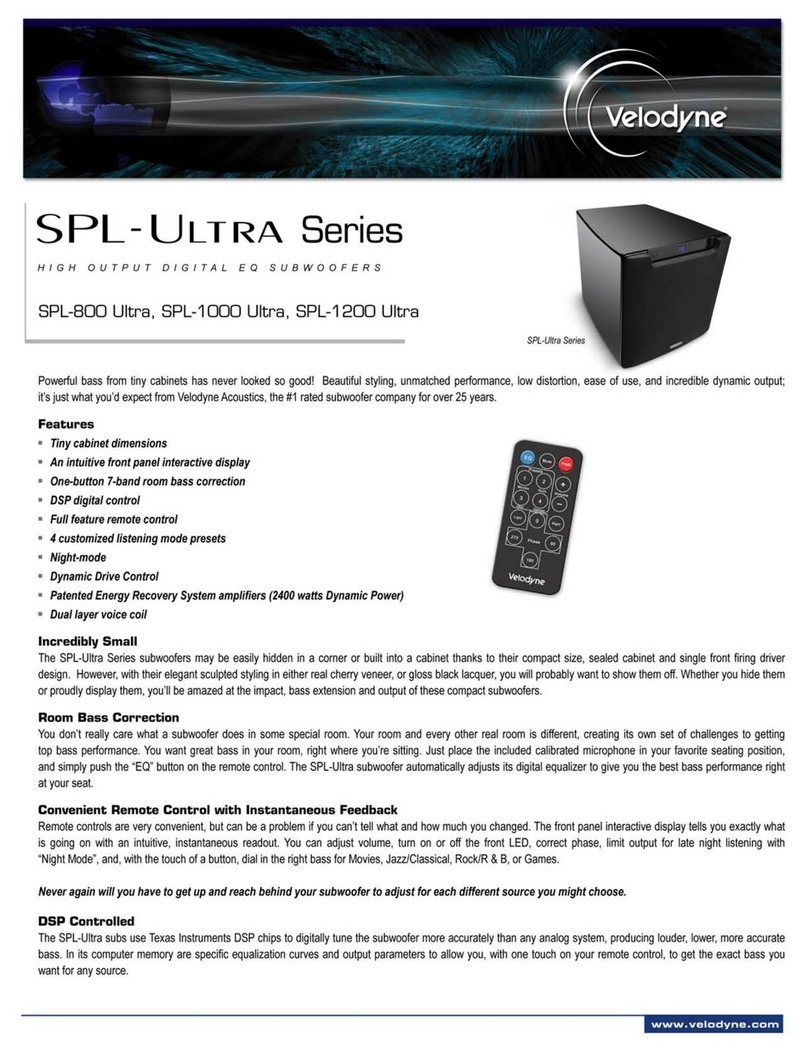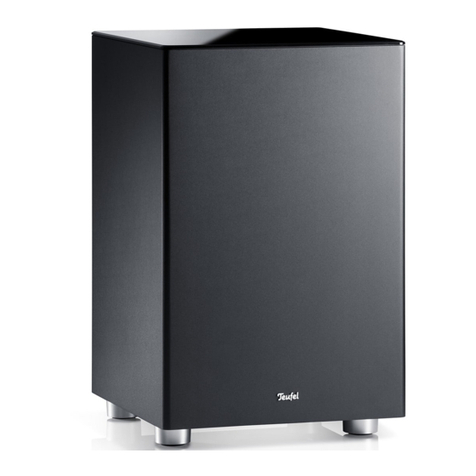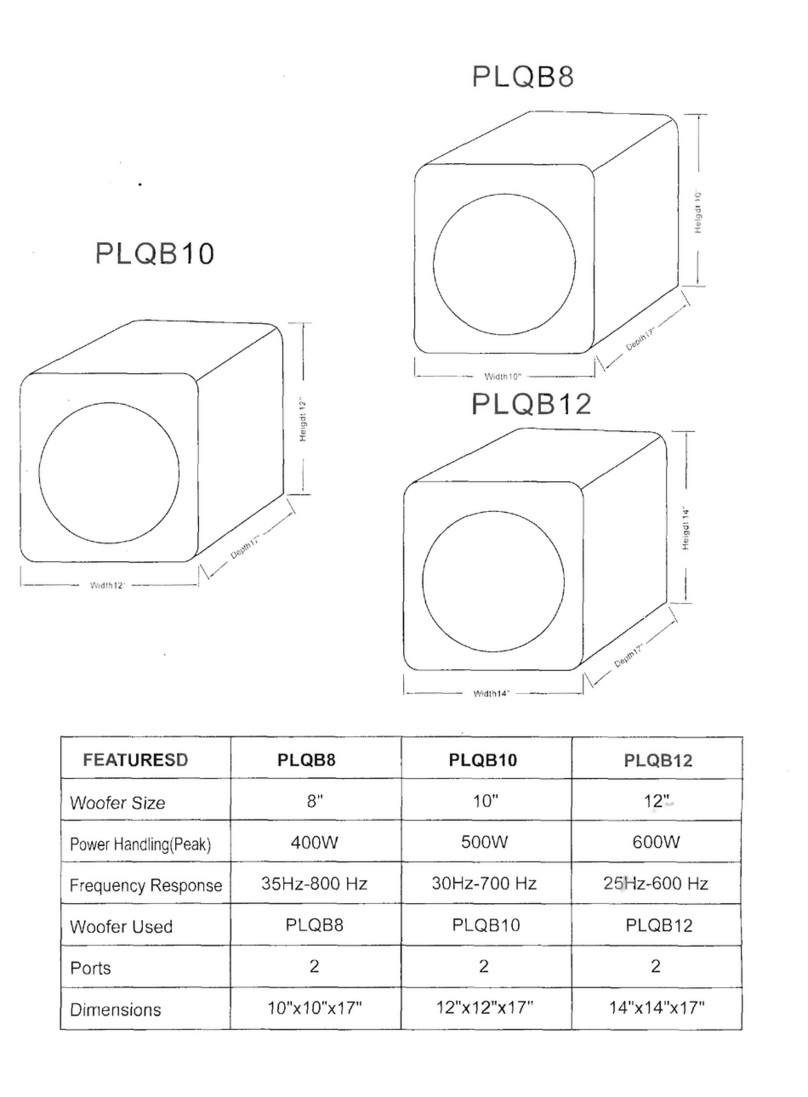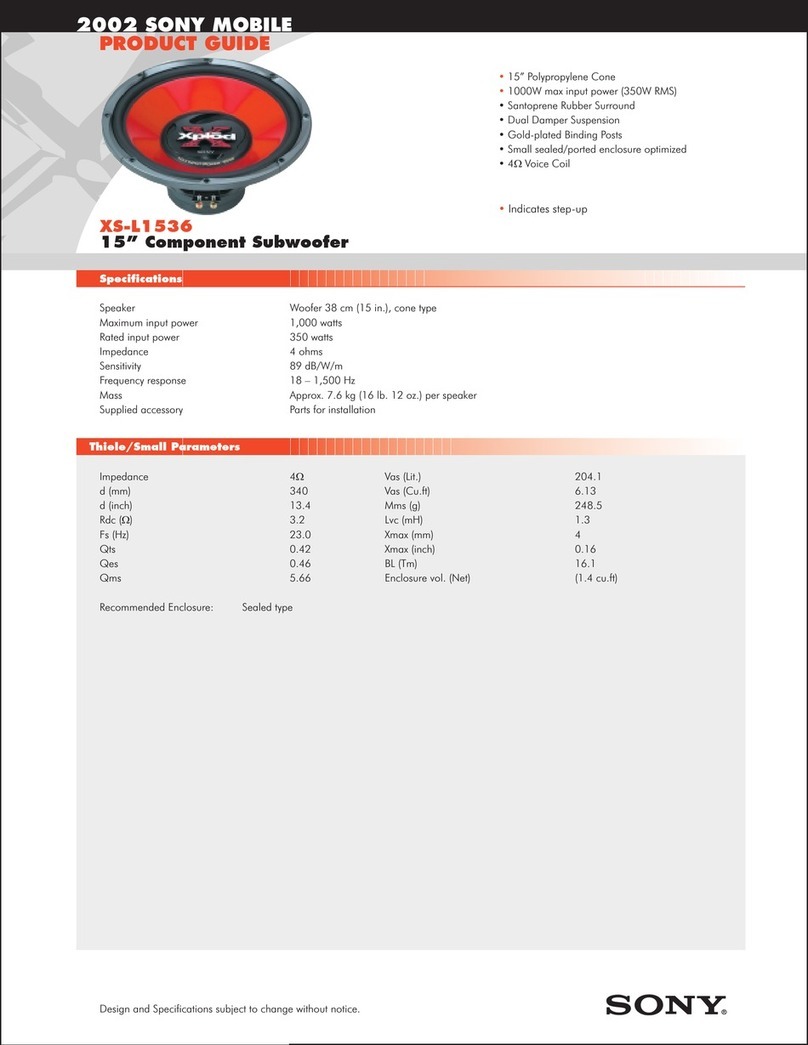
ENGLISH
subwoofer “passa-banda”
woofer 8”
89 dB (1 W - 1 m)
70 ÷ 220 Hz
200 Hz (passa-basso, 12 dB / ott.)
107 dB (1 m)
60 W (100 V, 16 Ω) / 30 W (70 V)
100 V – 70,7 V
16 Ω (bypass)
167 Ω (60 W – 100 V, 30 W – 70 V)
333 Ω (30 W – 100 V, 15 W – 70 V)
667 Ω (15 W – 100 V, 7,5 W – 70 V)
1,3 kΩ (7,5 W – 100 V, 3,75 W – 70 V)
Euroblock rimovibile a 4 poli
0,5 ÷ 4 mm²
interno
203 x 300 x 400 mm
nero (MQ90S-B) / bianco (MQ90S-W)
8 kg
Before connecting and using this product, please read this instruction manual carefully and keep
it on hand for future reference. The manual is to be considered an integral part of this product and
must accompany it when it changes ownership as a reference for correct installation and use as well
as for the safety precautions.
RCF S.p.A. will not assume any responsibility for the incorrect installation and / or use of this
product.
WARNING: To prevent the risk of fire or electric shock, never expose this loudspeaker to rain
or humidity and dust, but the case this has been expressly designed and made to get a suitable
IP protection grade (indicated in the product specifications).
SAFETY PRECAUTIONS
1. All the precautions, in particular the safety ones, must be read with special attention, as they
provide important information.
2. Loudspeaker lines (amplifier outputs) can have a sufficiently high voltage (i.e. 100 V) to involve a
risk of electrocution: never install or connect this loudspeaker when the line is alive.
3. Make sure all connections have been made correctly and the loudspeaker input voltage (in a
constant voltage system) or its impedance is suitable for the amplifier output.
4. Protect loudspeaker lines from damage; make sure they are positioned in a way that they cannot
be stepped on or crushed by objects.
5. Make sure that no objects or liquids can get into this product, as this may cause a short circuit.
6. Never attempt to carry out any operations, modifications or repairs that are not expressly
described in this manual.
Contact your authorized service centre or qualified personnel should any of the following occur:
• the loudspeaker does not function (or works in an anomalous way);
• the cable has been damaged;
• objects or liquids have got into the unit;
• the loudspeaker has been damaged due to heavy impacts / fire.
7. Should the loudspeaker emit any strange odours or smoke, remove it from the line after having
switched the amplier off.
8. Do not connect this product to any equipment or accessories not foreseen.
For suspended installation, only use the dedicated anchoring points and do not try to hang this
loudspeaker by using elements that are unsuitable or not specific for this purpose.
Also check the suitability of the support surface to which the product is anchored (wall, ceiling,
structure, etc.), and the components used for attachment (screw anchors, screws, brackets not
supplied by RCF etc.), which must guarantee the security of the system / installation over time, also
considering, for example, the mechanical vibrations normally generated by transducers.
9. RCF S.p.A. strongly recommends this product is only installed by professional qualied
installers (or specialised rms) who can ensure a correct installation and certify it according
to the regulations in force.
The entire audio system must comply with the current standards and regulations regarding
electrical systems.
10. There are numerous mechanical and electrical factors to be considered when installing a
professional audio system (in addition to those which are strictly acoustic, such as sound pressure,
angles of coverage, frequency response, etc.).
IMPORTANT NOTES
